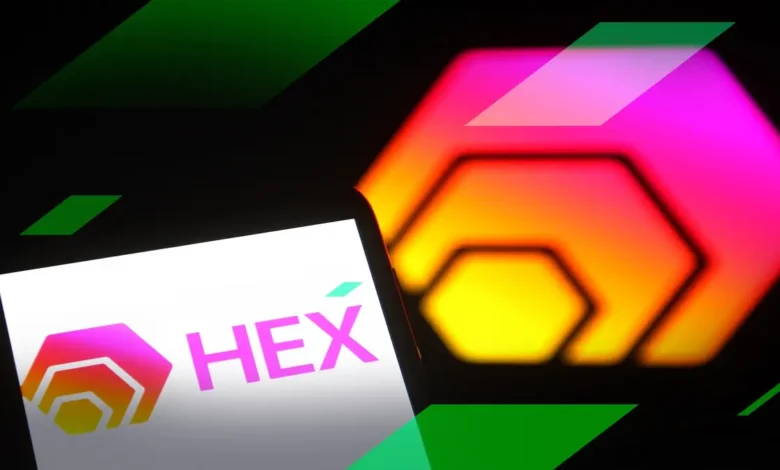HEX Share Price: A Deep Dive into the Dynamics of HEX Token Value

Explore an expert analysis of HEX share price trends, market dynamics, investor behavior, and future outlook. Discover what drives HEX price movements in this comprehensive guide.
Introduction to HEX Share Price
If you’ve spent any time in the cryptocurrency space, you’ve probably come across the term HEX share price. It’s a hot topic in DeFi (decentralized finance) circles and draws attention due to its unique tokenomics and controversial marketing. But what exactly is HEX share price? More importantly, why should anyone care?
HEX is a blockchain-based certificate of deposit. Think of it like a time-locked investment, but on the blockchain. Instead of traditional banking, HEX operates entirely through smart contracts on the Ethereum blockchain. HEX share price, in simple terms, refers to the value of the shares you receive when you stake HEX tokens. These shares determine your payout in future interest and bonuses. It’s not the price of the HEX token itself, but a measure of your position within the staking ecosystem.
Understanding HEX share price is crucial for investors and crypto enthusiasts alike. It offers insights into the profitability of staking, the long-term sustainability of the project, and the speculative sentiment around it. So let’s peel back the layers and get into the nitty-gritty.
What is HEX and How Does HEX Share Price Work?
HEX was launched in December 2019 by Richard Heart, a well-known personality in the crypto community. It brands itself as the first blockchain Certificate of Deposit (CD), promising high returns for long-term holders through staking. But unlike typical DeFi projects, HEX has an unconventional and polarizing approach.
When you stake HEX, you’re essentially locking up your tokens for a period ranging from one day to 15 years. In return, you receive shares—not traditional equity shares, but HEX shares, which are more like accounting units. The HEX share price determines how many shares you get for your stake. As more people stake HEX and as time progresses, the HEX share price increases, making it more expensive to get the same number of shares. This creates a sense of urgency, pushing early staking.
The HEX share price is not determined by market demand and supply alone. Instead, it’s algorithmically adjusted based on the highest payout per T-share (trillion shares) ever achieved. So, if someone ends their stake with a large return, the HEX share price permanently ratchets up to reflect that.
The Mechanics Behind HEX Share Price Calculation
Let’s break this down in plain English. The HEX share price is calculated based on a formula tied to how much HEX is paid out to stakers. Once a stake ends and the yield is calculated, if that yield is higher than any previous payout, the HEX share price gets permanently adjusted upward.
That means the longer you wait to stake, the fewer shares you get for your HEX. This mechanism is what makes early staking more rewarding, and late staking increasingly expensive in terms of share acquisition. In essence, the HEX share price is designed to encourage early and long-term participation.
For example, if Alice stakes 1,000 HEX and gets 10 T-shares today, and Bob comes a month later and tries the same stake amount and duration, he might only get 7 T-shares because the share price has increased. This deflationary-like aspect creates competition and urgency in the system.
HEX Share Price vs HEX Token Price: Understanding the Difference

A common misconception is to equate the HEX share price with the market price of the HEX token. They’re not the same.
The HEX token price is determined by market trading activity, like any other crypto asset. It fluctuates based on demand, supply, market sentiment, and broader crypto trends. You can buy and sell HEX tokens on various decentralized exchanges.
On the other hand, the HEX share price is internal to the HEX staking system. It reflects the cost of acquiring shares and is governed by smart contract rules rather than market activity. It only ever goes up—a feature built into its code.
While the HEX token price can go down, the share price does not. That makes HEX shares a sort of one-way ratchet mechanism, providing long-term incentives for stakers and protecting early participants from dilution.
Why HEX Share Price Matters to Investors
The HEX share price is a critical metric for anyone considering staking HEX. It affects how many shares you receive, which in turn influences your future rewards. Since payouts are based on shares, understanding the share price is fundamental to making profitable staking decisions.
If you’re a new investor, a high share price means you get fewer shares for your HEX. That directly reduces your yield compared to someone who staked earlier. Therefore, many HEX supporters argue that the best time to stake is “always now,” before the share price goes even higher.
Additionally, the HEX share price serves as an indicator of the health and momentum of the staking ecosystem. A rising share price suggests more value is being distributed among stakers and that the system is being used as intended.
HEX Share Price History: Tracking the Trends
Since its launch, HEX has seen an exponential increase in share price. Early adopters who staked in the initial months received significantly more shares than someone staking the same amount today. That exponential nature rewards loyalty and long-term vision.
HEX share price has increased dramatically over time, following major staking events and large stake expirations. Every time a major stake ends with a high yield, the share price adjusts upward. This permanent increase locks in value for existing stakers and makes new stakes more expensive in terms of shares.
This built-in share price escalation can be seen as a unique way to maintain scarcity and incentivize early participation. Historical charts show a staircase-like increase, with long periods of flat pricing interrupted by sudden jumps after big payouts.
What Influences HEX Share Price?
Several factors influence the HEX share price. The biggest one is the staking behavior of the community. When large amounts of HEX are staked for long durations, they usually yield higher returns. Once those stakes end, they can push the share price up permanently.
Another major influence is the behavior of “big players” or “whales.” When these large holders stake HEX, their yield can massively increase the share price once they end their stake. This has a trickle-down effect on smaller investors, who will get fewer shares for their future stakes.
Also, external market conditions and the HEX token price indirectly affect staking behavior, which in turn impacts the share price. If the market is bullish and HEX token price is up, more people might be inclined to stake, which can lead to higher yields and share price jumps.
HEX Share Price Strategy: Timing Your Stakes
Timing is everything in HEX. The earlier you stake, the more shares you get, and the higher your yield potential. But timing also depends on understanding the share price trends.
Many HEX stakers follow a ladder strategy—staking at various intervals to average out their share acquisition and yield. This can be a smart way to hedge against rising share prices and market volatility. Others go all-in on long-term stakes to lock in current share prices and maximize bonuses.
Regardless of strategy, the HEX share price should be a key consideration. Monitoring share price movements, upcoming stake expirations, and community behavior can help you make informed decisions that align with your investment goals.
HEX Share Price Forecast and Future Outlook

Predicting the HEX share price is tricky, but the trend so far has been consistently upward. Since the share price can only go up, it’s safe to say that the cost of acquiring shares will continue to rise.
That means HEX is structured to reward early adopters perpetually. Over time, new stakers will need to lock up more HEX for longer durations just to earn comparable returns. This dynamic fosters a culture of long-term commitment within the HEX ecosystem.
However, as with any crypto investment, it’s important to weigh risks. HEX operates on a novel and sometimes controversial model, and external factors like regulation, Ethereum gas fees, and overall crypto market performance can impact user participation and rewards.
Table: HEX Share Price vs HEX Token Price
| Metric | HEX Share Price | HEX Token Price |
|---|---|---|
| Determination Method | Smart Contract Formula | Market Supply & Demand |
| Volatility | Only Increases | Fluctuates Constantly |
| Function | Internal to Staking | Public Token Value |
| Investment Impact | Affects Stake Returns | Affects Trading Gains |
| Adjusts With Yield | Yes | No |
Expert Quote on HEX Share Price
“HEX’s share price system is one of the most unique DeFi mechanics ever built. It gamifies time and rewards those with the vision to hold long-term.” — DeFi Analyst & Crypto Researcher
FAQs About HEX Share Price
What is HEX share price? HEX share price refers to the internal value used to calculate how many shares you get when staking HEX tokens. It increases permanently over time based on system payouts.
How is HEX share price calculated? It’s calculated using the highest payout per T-share ever achieved. Each time a stake ends and sets a new record, the share price adjusts upward permanently.
Can HEX share price go down? No, it can only increase or stay the same. This feature incentivizes early staking and long-term commitment.
Is HEX share price the same as HEX token price? No, the HEX token price is determined by market activity. The share price is determined by a smart contract and reflects staking economics.
Why does the HEX share price matter? It determines how many shares you receive for your stake, which directly affects your yield. A higher share price means fewer shares for the same amount of HEX.
What’s the best strategy with HEX share price? Stake early and for longer durations. This helps you lock in lower share prices and maximize future rewards.
Conclusion: HEX Share Price Is the Heart of the HEX Ecosystem
The HEX share price is more than just a number; it’s the engine that powers the entire staking system. It encourages early adoption, long-term holding, and rewards those who understand the mechanics.
If you’re serious about participating in the HEX ecosystem, understanding the HEX share price isn’t optional—it’s essential. Whether you’re a seasoned investor or a newcomer to DeFi, keeping an eye on the share price will help you make smarter, more profitable decisions.
As with all crypto investments, do your own research, but know that in the world of HEX, time truly is money.





